First outbreak, 13th century
The first period of Geisslerlied began in 1258 in response to the breakdown of civil order in northern Italy. Permanent warfare, famine, and an apparent demise of the moral order in contemporary life gave rise to a movement of public flagellation accompanied by singing; the penitents implored the help of God to ameliorate their sufferings, but never formed a specific sect, and neither did they attempt a social revolution. Initially, the flagellants were members of the mercantile and noble classes, but as the movement spread outside of Italy, lower social classes took part.
Of the first period of activity, only a single song has survived, although many of the words they sang have been recorded. Typically the texts were imploring, penitential, and apocalyptic.
Second outbreak, 1349
The Black Death was one of the most traumatic events in European history, and the renewed desperation of the people, hopeful for divine intervention to end their sufferings, brought about a return of the flagellants and the Geisslerlieder. Unlike the situation with the first outbreak, much of the music was preserved. A single priest, Hugo Spechtshart of Reutlingen, who happened to be a capable musician, was impressed by the activity he witnessed, and transcribed exactly what he heard of the singing of the flagellants; indeed his work was one of the earliest examples of folk-song collection. He produced a chronicle of what he heard in the Chronicon Hugonis sacerdotis de Rutelinga (1349), and the content corresponded closely to the description of the lost music from a hundred years before: simple monophonic songs of verse and refrain, with a leader singing the verse and the group of flagellants singing the refrain in unison. Particularly interesting about Hugo's transcriptions was his notation of variation between successive verses sung by the lead singer, a procedure common in folk song.
This second outbreak of flagellants, with their incessant and repetitive Geisslerlieder spread far wider than the first, reaching England, Poland, and Scandinavia, and probably attracted a greater number of participants, although it did not last as long: most of the records of the occurrence are from 1349.
The Geisslerlieder were suppressed, eventually, by the Church. Parodies of the movement quickly arose, as well: in Switzerland in 1350 a description survives of a group singing Geisslerlieder fitted with new words, as a bawdy drinking song; whether the drinkers flogged themselves is not known. A parody of a Geisslerlied is also found in the 1975 film Monty Python and the Holy Grail , where a group of monks chants the Pie Jesu while hitting themselves with boards.

Medieval music encompasses the sacred and secular music of Western Europe during the Middle Ages, from approximately the 6th to 15th centuries. It is the first and longest major era of Western classical music and followed by the Renaissance music; the two eras comprise what musicologists generally term as early music, preceding the common practice period. Following the traditional division of the Middle Ages, medieval music can be divided into Early (500–1150), High (1000–1300), and Late (1300–1400) medieval music.
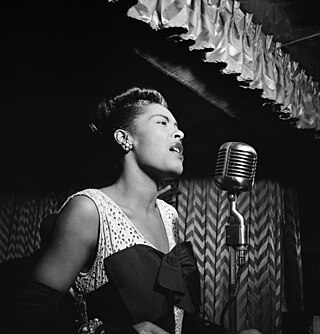
A song is a musical composition intended to be performed by the human voice. This is often done at distinct and fixed pitches (melodies) using patterns of sound and silence. Songs contain various forms, such as those including the repetition and variation of sections.

In music, monophony is the simplest of musical textures, consisting of a melody, typically sung by a single singer or played by a single instrument player without accompanying harmony or chords. Many folk songs and traditional songs are monophonic. A melody is also considered to be monophonic if a group of singers sings the same melody together at the unison or with the same melody notes duplicated at the octave. If an entire melody is played by two or more instruments or sung by a choir with a fixed interval, such as a perfect fifth, it is also said to be monophony. The musical texture of a song or musical piece is determined by assessing whether varying components are used, such as an accompaniment part or polyphonic melody lines.
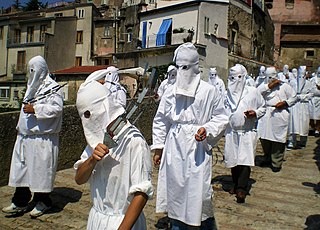
Flagellants are practitioners of a form of mortification of the flesh by whipping their skin with various instruments of penance. Many Christian confraternities of penitents have flagellants, who beat themselves, both in the privacy of their dwellings and in public processions, in order to repent of sins and share in the Passion of Jesus.
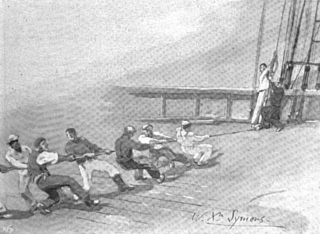
A sea shanty, chantey, or chanty is a genre of traditional folk song that was once commonly sung as a work song to accompany rhythmical labor aboard large merchant sailing vessels. The term shanty most accurately refers to a specific style of work song belonging to this historical repertoire. However, in recent, popular usage, the scope of its definition is sometimes expanded to admit a wider range of repertoire and characteristics, or to refer to a "maritime work song" in general.

"John Brown's Body" is a United States marching song about the abolitionist John Brown. The song was popular in the Union during the American Civil War. The tune arose out of the folk hymn tradition of the American camp meeting movement of the late 18th and early 19th century. According to an 1889 account, the original John Brown lyrics were a collective effort by a group of Union soldiers who were referring both to the famous John Brown and also, humorously, to a Sergeant John Brown of their own battalion. Various other authors have published additional verses or claimed credit for originating the John Brown lyrics and tune.
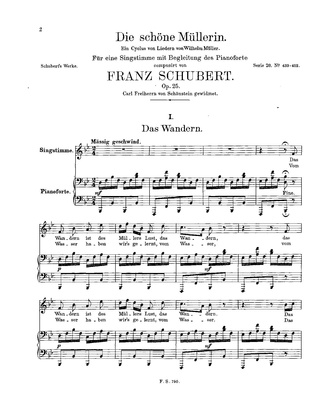
Strophic form – also called verse-repeating form, chorus form, AAA song form, or one-part song form – is a song structure in which all verses or stanzas of the text are sung to the same music. Contrasting song forms include through-composed, with new music written for every stanza, and ternary form, with a contrasting central section.
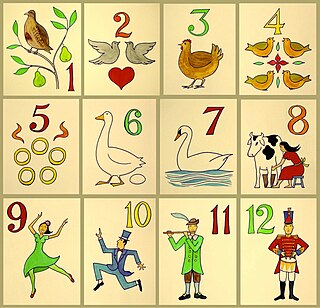
A cumulative song is a song with a simple verse structure modified by progressive addition so that each verse is longer than the verse before. Cumulative songs are popular for group singing, in part because they require relatively little memorization of lyrics, and because remembering the previous verse to concatenate it to form the current verse can become a kind of game.

"This Land Is Your Land" is one of the United States' most famous folk songs. Its lyrics were written by American folk singer Woody Guthrie in 1940 in critical response to Irving Berlin's "God Bless America", with melody based on a Carter Family tune called "When the World's on Fire". When Guthrie was tired of hearing Kate Smith sing "God Bless America" on the radio in the late 1930s, he sarcastically called his song "God Blessed America for Me" before renaming it "This Land Is Your Land".
The lauda or lauda spirituale was the most important form of vernacular sacred song in Italy in the late medieval era and Renaissance. Laude remained popular into the nineteenth century. The lauda was often associated with Christmas, and so is in part equivalent to the English carol, French noel, Spanish villancico, and like these genres occupies a middle ground between folk and learned lyrics.

"Goodnight, Irene" or "Irene, Goodnight," is a 20th-century American folk standard, written in 3
4 time, first recorded by American blues musician Huddie 'Lead Belly' Ledbetter in 1933. A version recorded by the Weavers was a #1 hit in 1950.

Gaudete is a sacred Christmas carol, thought to have been composed in the 16th century. It was published in Piae Cantiones, a collection of Finnish/Swedish sacred songs published in 1582. No music is given for the verses, but the standard tune comes from older liturgical books.
Lekha Dodi is a Hebrew-language Jewish liturgical song recited Friday at dusk, usually at sundown, in synagogue to welcome the Sabbath prior to the evening services. It is part of Kabbalat Shabbat.
Mozarabic chant is the liturgical plainchant repertory of the Visigothic/Mozarabic rite of the Catholic Church, related to the Gregorian chant. It is primarily associated with Hispania under Visigothic rule and later with the Mozarabs and was replaced by the chant of the Roman rite following the Christian Reconquest of the Iberian Peninsula. Although its original medieval form is largely lost, a few chants have survived with readable musical notation, and the chanted rite was later revived in altered form and continues to be used in a few isolated locations in Spain, primarily in Toledo.
"The Maid and the Palmer" is an English language medieval murder ballad with supernatural/religious overtones. Because of its dark and sinister lyrics, the song was often avoided by folk singers. Child's main text in English comes from the seventeenth century ballad collection compiled by Thomas Percy, supplemented by a nineteenth century fragment recalled by Sir Walter Scott, although both Child and later scholars agree that the English language version(s) of the ballad derive from an earlier Continental original or "Magdalene ballad" that is based upon a medieval legend associated with Mary Magdalene, in which her story has become conflated with that of the Samaritan woman at the well in the Gospel of John. The ballad was present in oral tradition in Scotland in the early years of the nineteenth century but was subsequently lost there, however versions have since been recovered in Ireland, in particular among the Irish Traveller community, with an intervening gap of some 150 years. A small fragment of the ballad has also been claimed to have been recovered in the US, but the veracity of this record is disputed. The "palmer" of Child's title, as included the Percy MS version, refers to a pilgrim, normally from Western Europe, who had visited the holy places in Palestine and who, as a token of his visits to the Holy Land, brought back a palm leaf or a palm leaf folded into a cross. In the ballad the palmer, as a holy man, has the ability to see the Magdalene character/protagonist's past in which she has borne and buried numerous children and to prescribe what fate awaits her in the hereafter, in the form of a set of seven year penances following which she will be absolved from her sins; in Continental versions, and in one variant collected in Ireland, the palmer is in fact Jesus.
Jewish music is the music and melodies of the Jewish people. There exist both traditions of religious music, as sung at the synagogue and domestic prayers, and of secular music, such as klezmer. While some elements of Jewish music may originate in biblical times, differences of rhythm and sound can be found among later Jewish communities that have been musically influenced by location. In the nineteenth century, religious reform led to composition of ecclesiastic music in the styles of classical music. At the same period, academics began to treat the topic in the light of ethnomusicology. Edward Seroussi has written, "What is known as 'Jewish music' today is thus the result of complex historical processes". A number of modern Jewish composers have been aware of and influenced by the different traditions of Jewish music.
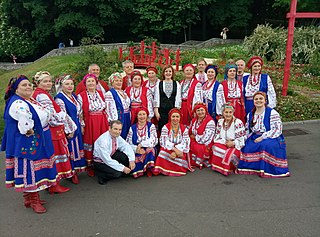
Ukrainian folk music includes a number of varieties of traditional, folkloric, folk-inspired popular music, and folk-inspired European classical music traditions.
"Botany Bay" is a song that can be traced back to the musical burlesque, Little Jack Sheppard, staged at the Gaiety Theatre, London, England, in 1885 and in Melbourne, Australia, in 1886. The show was written by Henry Pottinger Stephens and William Yardley, with music composed and arranged by Wilhelm Meyer Lutz. The show's programme credits "Botany Bay" as "Old Air arr. Lutz". Sheet music from Allan & Co. in Australia credits Florian Pascal, the pseudonym of Joseph Williams Jr. (1847–1923), a music publisher and composer who published the show's music. Pascal composed other numbers in the score but received no credit for "Botany Bay" in the programme.

Welsh folk music refers to music that is traditionally sung or played in Wales, by Welsh people or originating from Wales.












